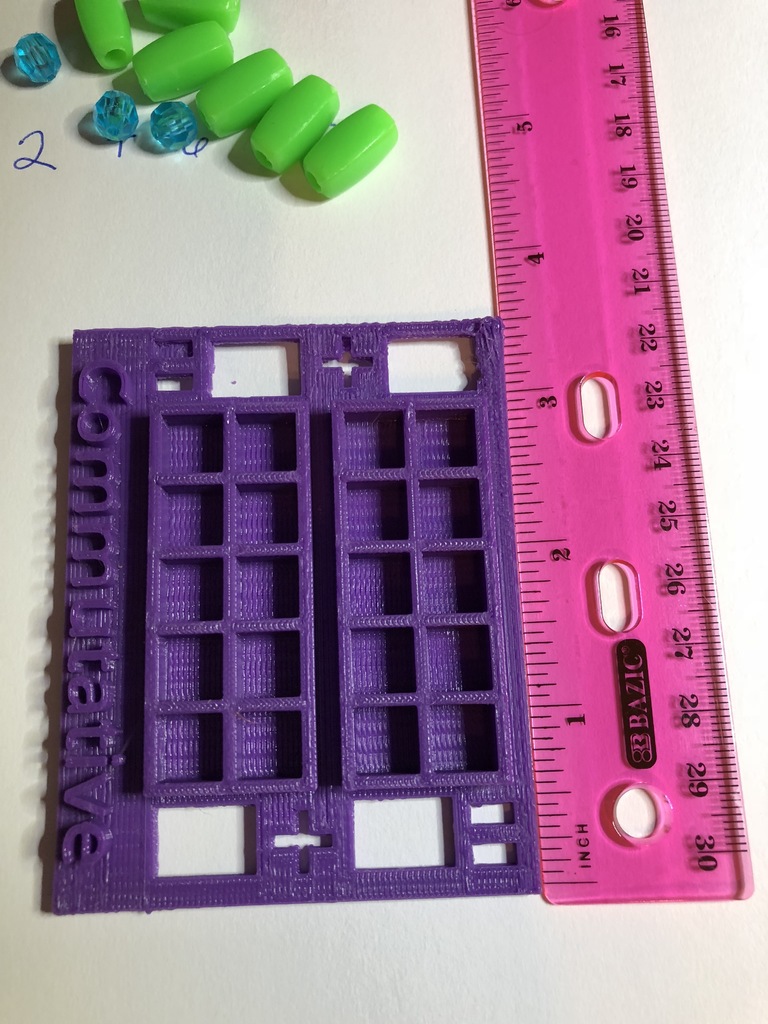
3D Commutative Property 10-Frame Counters
thingiverse
Upper elementary students will design or modify counters for the attached 10-frame. Lower grades will use the attached 10-frame to practice understanding the commutative property in math, which states that numbers can be added in any order without changing the result, as seen in examples such as 3 + 2 = 5 and 2 + 3 = 5. Attached are STL files for the Commutative 10-frame with blocks for students to practice tracing the "+" and "=" signs, and placing numbers under the counted 10-frame. The lower grades' game is cooperative, where two students face each other on either side of the 10-frames, taking turns placing counters in their frame and writing number sentences from their point of view. Using dice is allowed as long as a roll of 6/6 or 5/6 requires re-rolling. Each student puts the number of counters in their frame and writes the corresponding number sentence. The other student does the same, effectively flipping the addends to demonstrate the commutative property. Upper grades are tasked with being "toymakers" in a STEM unit lasting two 45-minute classes. They work in teams of two to design a unique counter, copy and paste it ten times, and complete tasks within additional constraints. A set of counters with two marks on top is included for lower grades to use as an alternative. A set of four template counters allows for differentiation. Additionally, a slightly larger 10-frame that was initially designed but had to be resized to fit the MakerBot Replicator Mini is also attached.
With this file you will be able to print 3D Commutative Property 10-Frame Counters with your 3D printer. Click on the button and save the file on your computer to work, edit or customize your design. You can also find more 3D designs for printers on 3D Commutative Property 10-Frame Counters.
